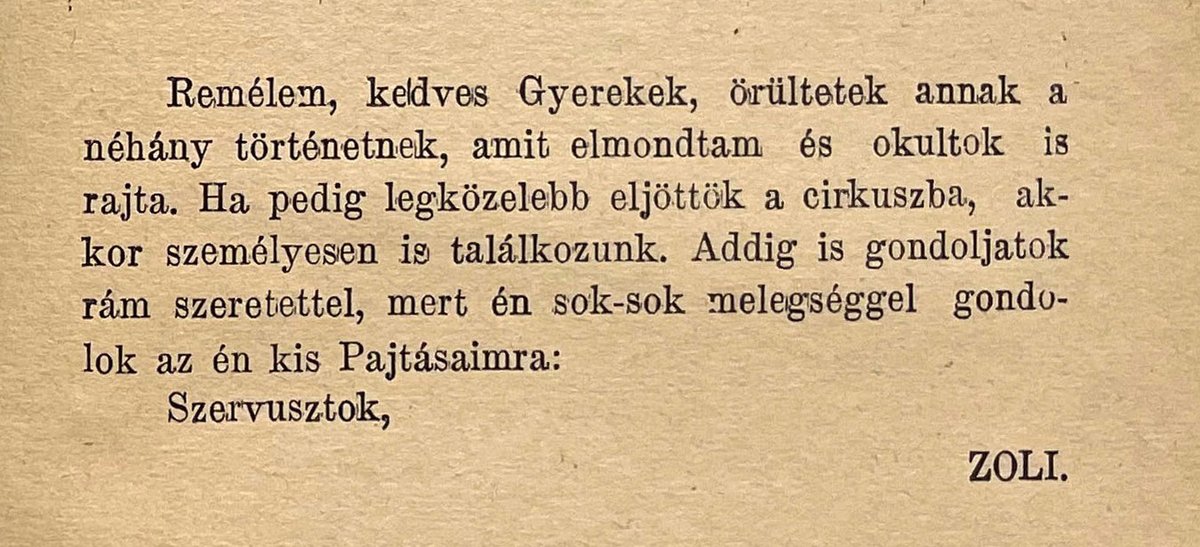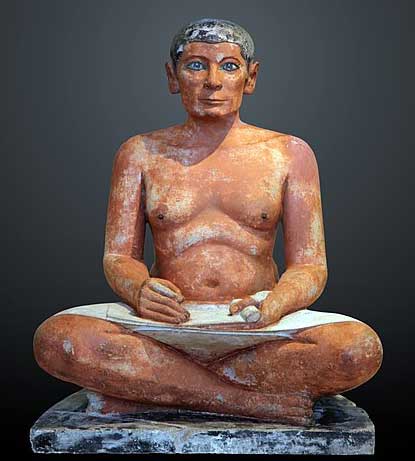This is all that remains of Zoli the Clown, a Jewish little person, once the most famous circus performer in Hungary, who perished, alongside 560 000 other Hungarian Jews, in the Holocaust.
We should remember him for the joy he brought, and his courage. This is his story. 1/
We should remember him for the joy he brought, and his courage. This is his story. 1/
Zoltán Hirsch, "Zoli the Clown", was born on 6 Feb 1885, the third child of a family of Jewish merchants. Until the age of three he was treated for Rickets disease due to his small size. Later, his family moved to Pécs, where he became captivated by the world of the circus. 2/ 

Zoli spent his leisure time at his hometown Pécs’s major entertainment sites, the Schmitt Folk Arena Circus and the Pécs Vaudeville Theatre, where he obsessively attended all the shows and loitered backstage, eager to meet his idols, the acrobats & clowns who worked there. 3/
Zoli was soon noticed by the theatre director Albert Kövessy, who urged him to perform as a sideshow at the 1907 National Exhibition in Pécs. Soon afterwards, Zoli abandoned his apprenticeship at a blacksmith and left his parent's home forever - for a life in the circus. 4/
Zoli re-invented himself as a clown, with unique acts and style: a parody of a boxing-match with a Strong Man, a clumsy cook’s struggle with hungry monkeys, a horseback riding cowboy fighting Indians, a dwarf innkeeper enthusiastically courting a flirtatious giantess... 5/ 





He soon earned an international reputation as a clown, performing at London's Olympia, Hippodrome, and Queen’s Theatre, at the Moulin Rouge, at St Petersburg's Villa Rodeo, in Latin America and as far afield as South Africa. He became a national celebrity in Hungary. 6/
Zoli's appearances were regularly reported on in the showbiz columns of all the leading Hungarian newspapers. He starred in several silent movies, as well as in some of the famous attractions of interwar Hungary, the Beketow Circus and the Ungarische Lilliputaner Gruppe. 7/ 

In 1942 the Hungarian authorities promulgated a series of anti-Jewish decrees, which, amongst other things, strictly limited the employment of Jews in artistic professions. As a consequence of this measure, Zoli was fired from his position at Circus Fényes. 8/
Forced to somehow still make a living, the 57 years-old clown self-published an autobiography, "The Great Life of a Small Man". The name Zoli on the cover, not only refers to his short stature, but also denotes the iconic status he enjoyed in Hungary. 9/ 



An example of this fame is the story of a postcard that was sent, as a bet, by a friend from Sweden - simply addressed to “Zoli, Hungary”. It had no problems in reaching its destination. 10/
Each of the book’s 100 copies, carefully inscribed on the title page "With true love from Zoli", was sold by the author himself, who peddled his book on the streets. Zoli sought to earn his living by bringing joy and laughter to readers amidst increasingly terrible times. 11/ 





When in March 1944 the German Wehrmacht occupied Hungary, the situation for Jews worsened rapidly. They had to wear yellow stars, many Jewish men were imprisoned, and ghettos were established. Hirsch tried to survive by selling his book, but he was arrested for doing so. 12/
He was also charged with wearing a yellow star that was too small to comply with the Nazi regulations. Ever the clown, the last – heartbreaking - words of his recorded are his joking defense: "I thought, please, a smaller star is enough for a dwarf." 13/
Zoli was imprisoned and soon transported Auschwitz. Since his dwarfism was not of a hereditary or genetic nature, Dr. Mengele (who "collected" dwarfs for experiments) was not interested in him. Zoli did not survive the camp. He died in the Auschwitz gas chambers in 1944. 14/
I'm indebted for much of the information in this thread to the Escape Act's blog-post on Circus Jews, which you can read here: 15/
theescapeactshow.com/blog/past-zolt…
theescapeactshow.com/blog/past-zolt…
The final paragraph of Zoli's book reads (with thanks to @l_linguist for the translation):
"I hope that you enjoyed the few stories I had told you, and that you’re all the wiser for them too. And if you come to the circus next time, we’ll meet in person as well.." [cont] 16/17
"I hope that you enjoyed the few stories I had told you, and that you’re all the wiser for them too. And if you come to the circus next time, we’ll meet in person as well.." [cont] 16/17

".... Until then, please think of me with fondness, because I too think with lots of affection of my young pals.
Good bye,
Zoli." 17/17

Good bye,
Zoli." 17/17


Several of you have DM'ed me to ask for more info about the Zoli scooter promotional toy in the video. I'm very fortunate that my copy of Zoli's book is accompanied by a mint example of this toy in its original box - with the all-important key to the clockwork motor included. 18/ 

There is some doubt as to when this toy was made - some sources on the net say 1960s-1970s, after his death, but it's far more likely it was made in the 1930s, at the height of Zoli's fame. There is nothing in my example - box and scooter - inconsistent with a 1930s date. 19/ 

It's also possible of course that it's a 1930s toy that was later re-issued in the 1960s. Whatever its date, it's simply wonderful: the windup clockwork motor and ever-swiveling front wheel give it a comical random motion as you can see in the video, perfect for a clown. 20/
Amazingly, I've just found out that this "Roll Zoli" toy - or more specifically, its box - even inspired a series of silkscreen prints produced by Andy Warhol in 1983. It's moving to learn that the memory of this kind, gifted, warm-hearted man lives on, 70 years after death. 21/ 



Based on the information kindly supplied by @macskosz2, it now seems the most likely date range for the Zoli toy is between the 1950s (when the Lemezarugyarjatekai factory opened) and the 1970s, so it was apparently created after Zoli's death as a tribute.
lemezarugyarjatekai.hu/page/gallery
lemezarugyarjatekai.hu/page/gallery
• • •
Missing some Tweet in this thread? You can try to
force a refresh


















